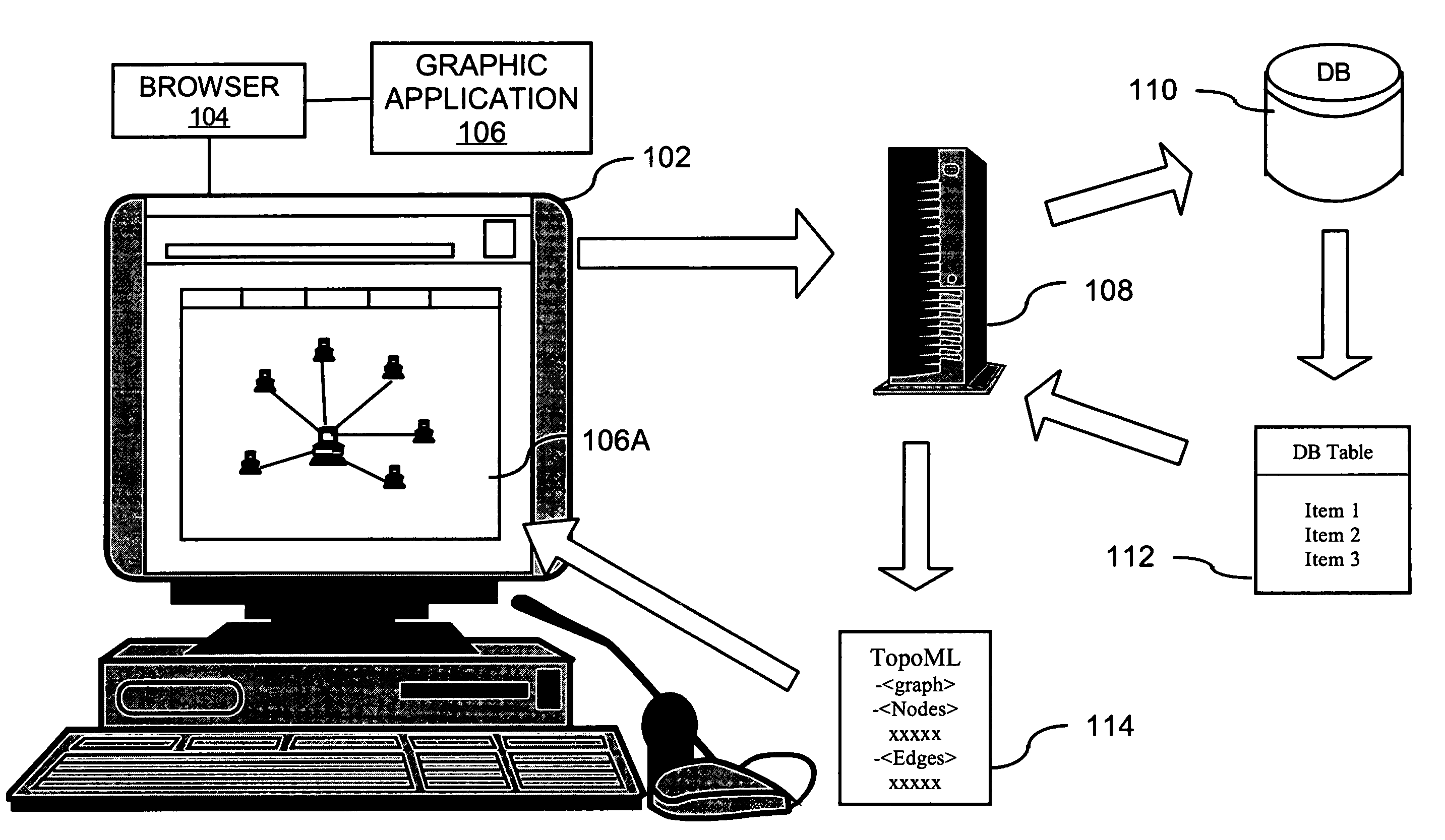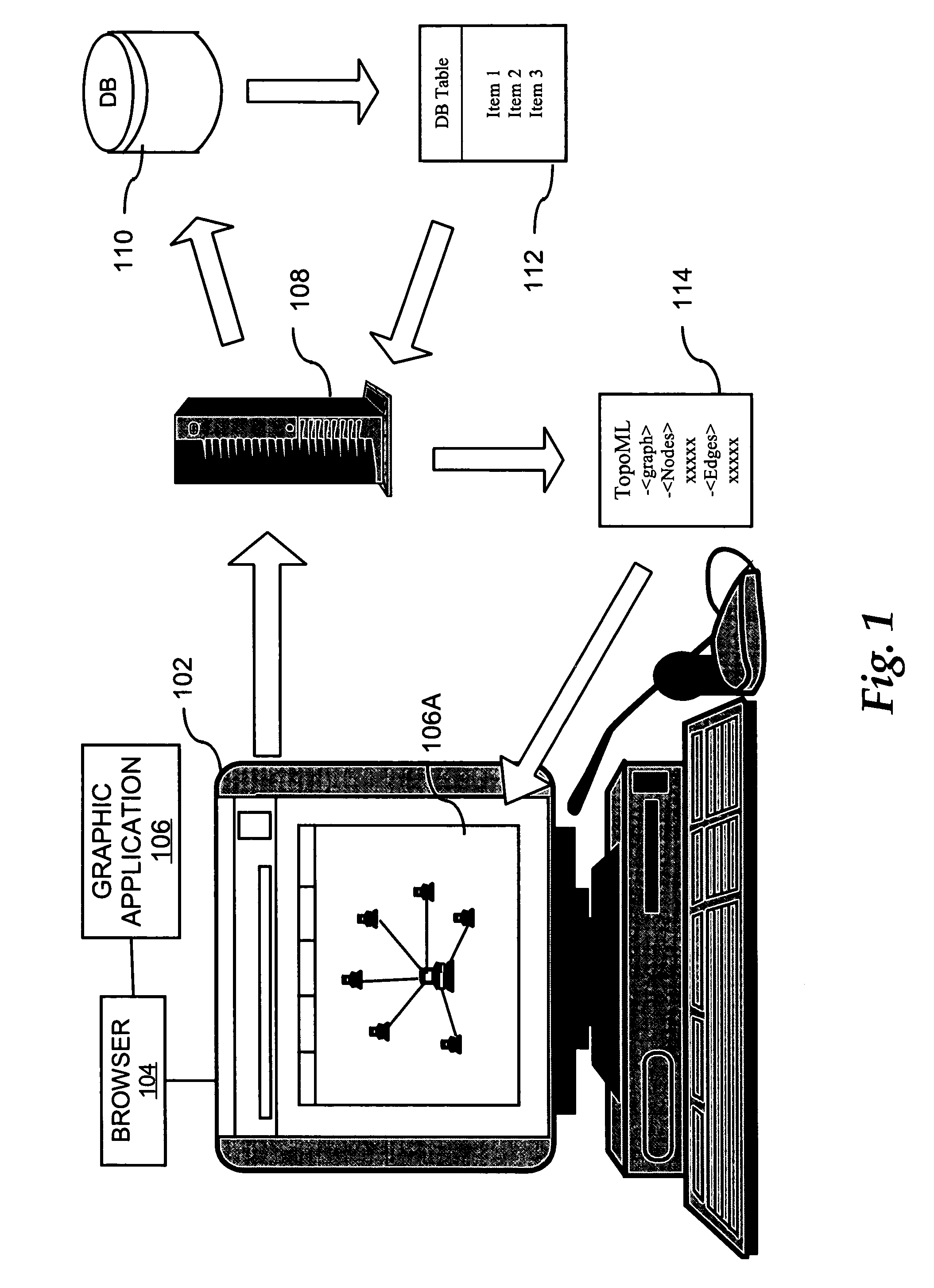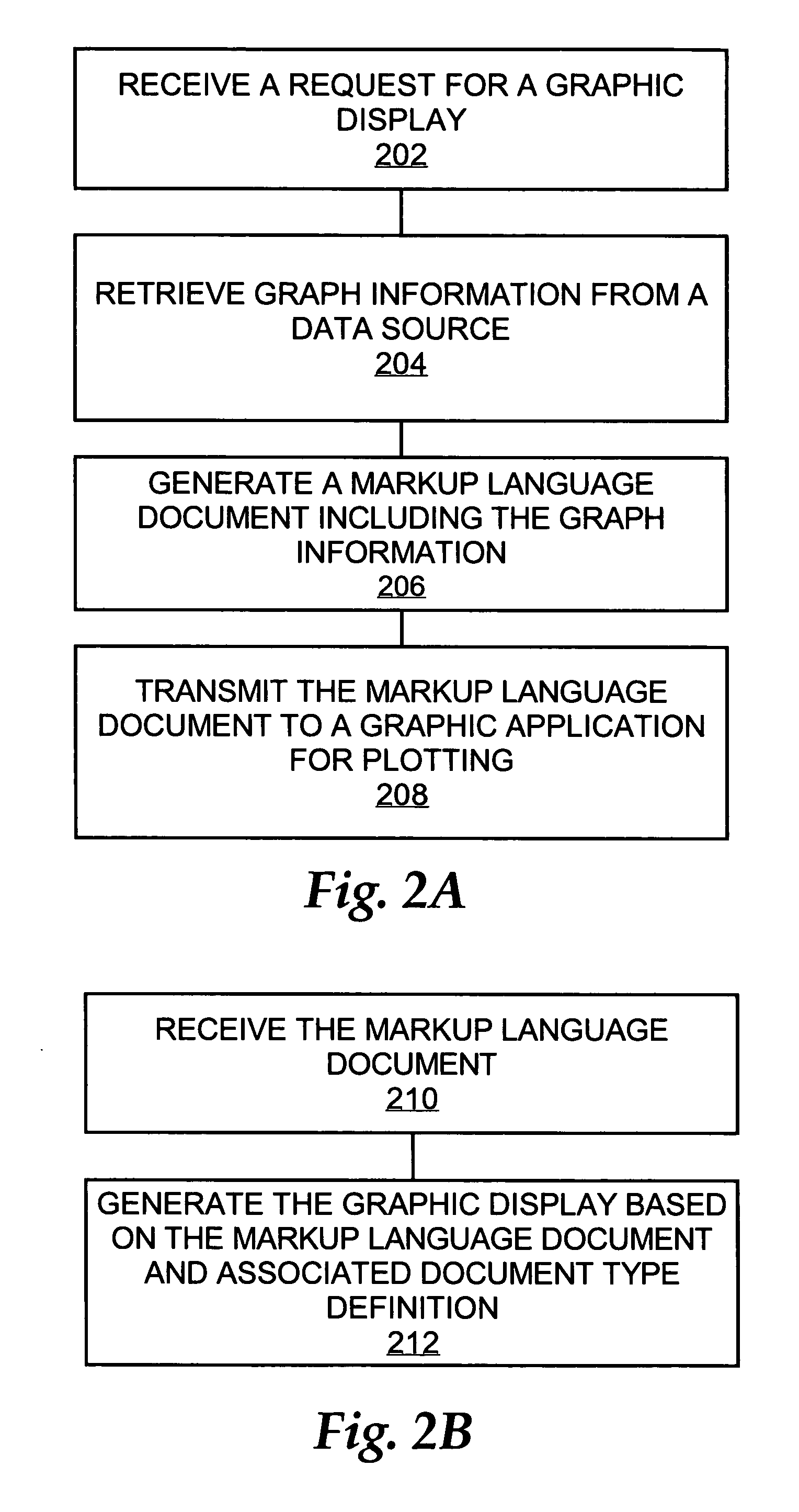Incremental plotting of network topologies and other graphs through use of markup language
a graph and network topology technology, applied in the computer field, can solve the problems of wasting processing resources, affecting the visualization effect, so as to facilitate the incremental graph plotting and save processing resources
- Summary
- Abstract
- Description
- Claims
- Application Information
AI Technical Summary
Benefits of technology
Problems solved by technology
Method used
Image
Examples
Embodiment Construction
[0019]A method for plotting a graph using a markup language is described. An aspect of the method is used to plot a network topology.
[0020]In the following description, for the purposes of explanation, numerous specific details are set forth in order to provide a thorough understanding of the present invention. It will be apparent, however, that the present invention may be practiced without these specific details. In other instances, well-known structures and devices are shown in block diagram form in order to avoid unnecessarily obscuring the present invention.
[0021]In view of the shortcomings described above in relation to laying out and plotting network topologies simply, clearly and efficiently, a method for incrementally plotting a network topology is highly desirable.
[0022]The present invention comprises, in one aspect, a method for incremental plotting of network topologies and other graphs. Other aspects and features of the invention will become apparent from the following ...
PUM
 Login to View More
Login to View More Abstract
Description
Claims
Application Information
 Login to View More
Login to View More - R&D
- Intellectual Property
- Life Sciences
- Materials
- Tech Scout
- Unparalleled Data Quality
- Higher Quality Content
- 60% Fewer Hallucinations
Browse by: Latest US Patents, China's latest patents, Technical Efficacy Thesaurus, Application Domain, Technology Topic, Popular Technical Reports.
© 2025 PatSnap. All rights reserved.Legal|Privacy policy|Modern Slavery Act Transparency Statement|Sitemap|About US| Contact US: help@patsnap.com



